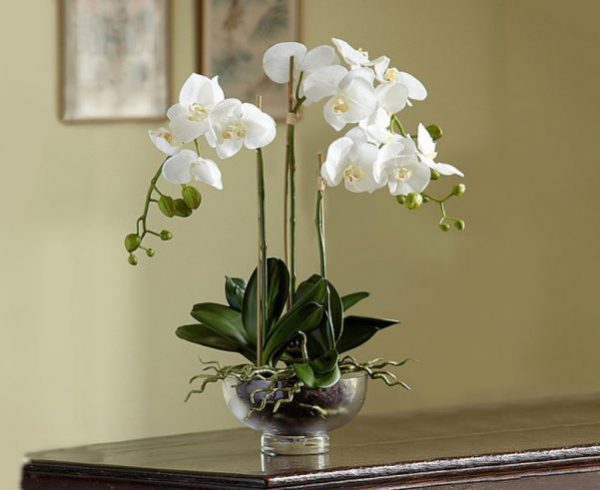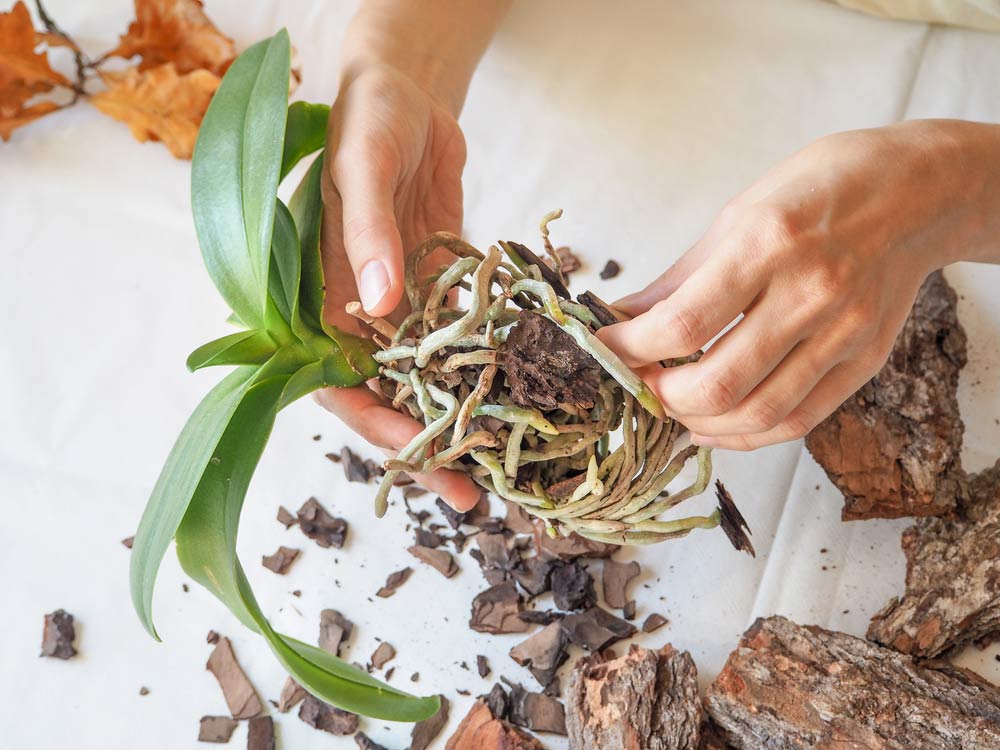- Быстрая
доставка - Свежие
цветы - Выгодные
цены
Как правильно ухаживать за орхидеей после цветения
Как долго цветет орхидея?
Продолжительность цветения орхидеи зависит от вида орхидеи и условий ее ухода. В большинстве случаев орхидея цветет от нескольких недель до нескольких месяцев. К примеру, некоторые виды орхидеи цветут всего лишь 2-3 недели, тогда как другие могут цвести до 6 месяцев или больше.
Кроме того, продолжительность цветения может зависеть от условий ухода. Орхидея может быстро потерять цветы, если ее поставить на солнце или недостаточно поливать. Поэтому важно соблюдать правильный режим полива, температуры, влажности и освещения, чтобы сохранить цветение орхидеи на более длительное время.
Как можно продолжить цветение орхидеи?
Есть несколько способов продолжить цветение орхидеи:
- Обеспечьте правильное освещение: Орхидеям нужно достаточно света, но не прямых солнечных лучей. Расположите орхидею в помещении, где достаточно естественного света, или используйте искусственное освещение.
- Сохраняйте оптимальную температуру: Большинство орхидеев растут и цветут при температуре от 18 до 24 градусов Цельсия днем и от 15 до 18 градусов Цельсия ночью. Не располагайте орхидею в помещении с тяжелой или перепадающей температурой.
- Соблюдайте правильный режим полива: Перед поливом убедитесь, что верхний слой грунта в горшке высох. Поливайте орхидею мягкой водой, не позволяйте почве полностью пересыхать или отдохнуть в воде.
- Используйте удобрения: При цветении орхидеи можно добавлять удобрения для орхидеев, содержащих фосфор и калий. Это поможет поддержать здоровье растения и продолжить цветение.
- Предотвращайте стрессы: Попытайтесь избегать перемещения орхидеи или изменения ее режима ухода, когда она цветет. Это может вызвать стресс и сократить продолжительность цветения.
Важно помнить, что каждая орхидея уникальна, поэтому могут быть различия в ее уходе и продолжительности цветения.
Как ухаживать за орхидеями после цветения?
 После цветения орхидея требует особого ухода, чтобы обеспечить ей оптимальные условия для восстановления и нового роста. Вот несколько советов по уходу за орхидеями после цветения:
После цветения орхидея требует особого ухода, чтобы обеспечить ей оптимальные условия для восстановления и нового роста. Вот несколько советов по уходу за орхидеями после цветения:
- Осторожно обрежьте стебель цветка: Если стебель цветка засох или изменил цвет, осторожно обрежьте его близко к основанию. Если на стебле есть зеленые пятна, оставьте его ненарушенным, поскольку оно может снова зацвести.
- Продолжайте поливать с осторожностью: После цветения орхидея не нуждается в таком частом поливе, но не допускайте пересушивания почвы. Регулярно проверяйте влажность почвы и поливайте, когда верхний слой подсохнет.
- Сохраняйте оптимальную температуру: Многие виды орхидеев требуют теплой температуры, но специфические требования могут отличаться. Обратите внимание на рекомендации по конкретному виду орхидеи и старайтесь обеспечить оптимальную температуру для ее роста.
- Храните достаточную освещенность: Орхидеи нуждаются в достаточном свете для фотосинтеза и здорового роста. Расположите их в ярких, но избегайте прямых солнечных лучей, поскольку они могут повредить листья.
- Применяйте удобрения с умеренной концентрацией: После цветения можно продолжить добавление удобрений для орхидеев, но используйте уменьшенную концентрацию и применяйте их реже, чем во время цветения. Следуйте инструкциям на упаковке удобрений и не надувайте растение лишними питательными веществами, что может повредить корни.
- Пересаживайте растение при необходимости: Если почва в орхидее стала затвердевшей или загрязненной, возможно нужна пересадка. Пересаживайте орхидею в свежий грунт с использованием высококачественных материалов, которые обеспечат соответствующую вентиляцию и дренаж.
- Удалите поврежденные или больные листья: Если листья орхидеи стали желтыми, пятнистыми или засохшими, возможно, они требуют удаления. При удалении используйте стерильные инструменты и не повреждайте другие части растения.
- Обеспечьте соответствующую вентиляцию: Орхидеи нуждаются в свежем воздухе для здорового роста. Обеспечьте подходящую вентиляцию в помещении, где находится растение, и избегайте задержки воздуха.
Следуя этим советам, вы сможете обеспечить соответствующий уход за орхидеями после цветения и поддержать здоровье и красоту для последующего цветения.

